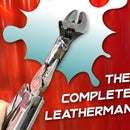Introduction: It's Dead Blow Hammer Time
I've been fascinated by hammers for a long time. Being humankind's first tool it has been iterated on over thousands of years and the number of hammer types are countless. So was this a good idea to embark on…?
You'll find out if you spend $10 on material:-)
For many of my builds, Laura Kampf has been a great source of inspiration (her beer bike became my bike cinema) A while back she made a dead blow hammer, it stuck with me but it was only recently this twist to how I could make my very own version landed in my head.
There are countless other inspirational sources here, Zachary (www.zhfabrications.com) I met at Makers Central two years ago, makes beautiful hammers. Adam Savage made a hammer of a book:-)
Supplies
Round stock to fit your choice of pipe, 20 cm
1/2' T-coupling, brass, copper… or other metal
1/2' fitting
1/2' cap
Bike tire tube
Magnet
3D filament
Tool:
Sanding paper (electrical sander)
Metal saw (cutting both the round stock and the fitting)
3D printer, optional!
Step 1: Can You Handle It…
Fitting the round stock to the 1/2' t-coupling is the first step. You can either sand it by hand or have the sander do it. Make sure you do this at a very slight angle. I measured with my calipers to get the right diameter from the coupling to match where I would cut the round stock.
Then gently screw the handle in place, make sure it is straight, unscrew if too tight. You don't want it to block the inside of the pipe.
Step 2: Hammer Head Fitting
Pretty straight forward this next step, add your desired parts to the t-coupling. I could have chosen a cap with threads but for weight and symmetry, I chose to add a fitting before the cap.
The threads on the outer side were too long so I shaved off a few millimeters so the cap would screw all the way in.
Step 3: Filling the Head
For this hammer to become a dead blow hammer the head needs to be filled with lead pellets. These small lead balls make the hammer hit the target with minimal rebound from the struck surface.
The size of the lead pellets depends on how big your hammerhead is.
Step 4: Plastic Fantastic Hammer…?
Well, this hammer is no ordinary hammer, it's my hammer and I can do what I want. So I thought a 3D printed hammerhead would be a nice option since the t-coupling already has threads.
One of my favorite Fusion 360 tools is the thread option. I made a couple of different shapes and printed this with 100% fill for a more solid punch.
Printed on my PRUSA i3 mk3.
Step 5: Adding Some Comfort
I could go with a naked handle but decided to dress it up with a piece of bike tire tubing. Gives a better grip and I like the look of it. I made sure the tubing was tight enough so I could pull it on but I wouldn't move around.
Step 6: Adding a Happy Ending
Since I already made one side of the hammerhead 3D printed it was no surprise I made a second part to the end of the handle containing a magnet. This little add-on makes for easy nail retrieval:-)
Step 7: Nailed It…?!
It is dangerous to enter the sea of hammers, I can imagine a few hardcore hammerheads out there shrugs and laugh at this build. Is it really a hammer? Will it make Laura proud…?
So far I'm quite happy with this new hammer of mine, there are some interesting uses. For one I use the plastic head for hammering plastic parts when assembling 3D prints. As you can see, I made 3 hammers, all very similar but variations in metal, thickness, and head shape.
Please hammer in your thoughts and feedback, would love to see other uses of the pipe fittings:-)
Who's up for a hammer duel? Laura? Laura!!
If you enjoyed this Instructables please follow along over at my Instagram: @smogdog for more builds…









